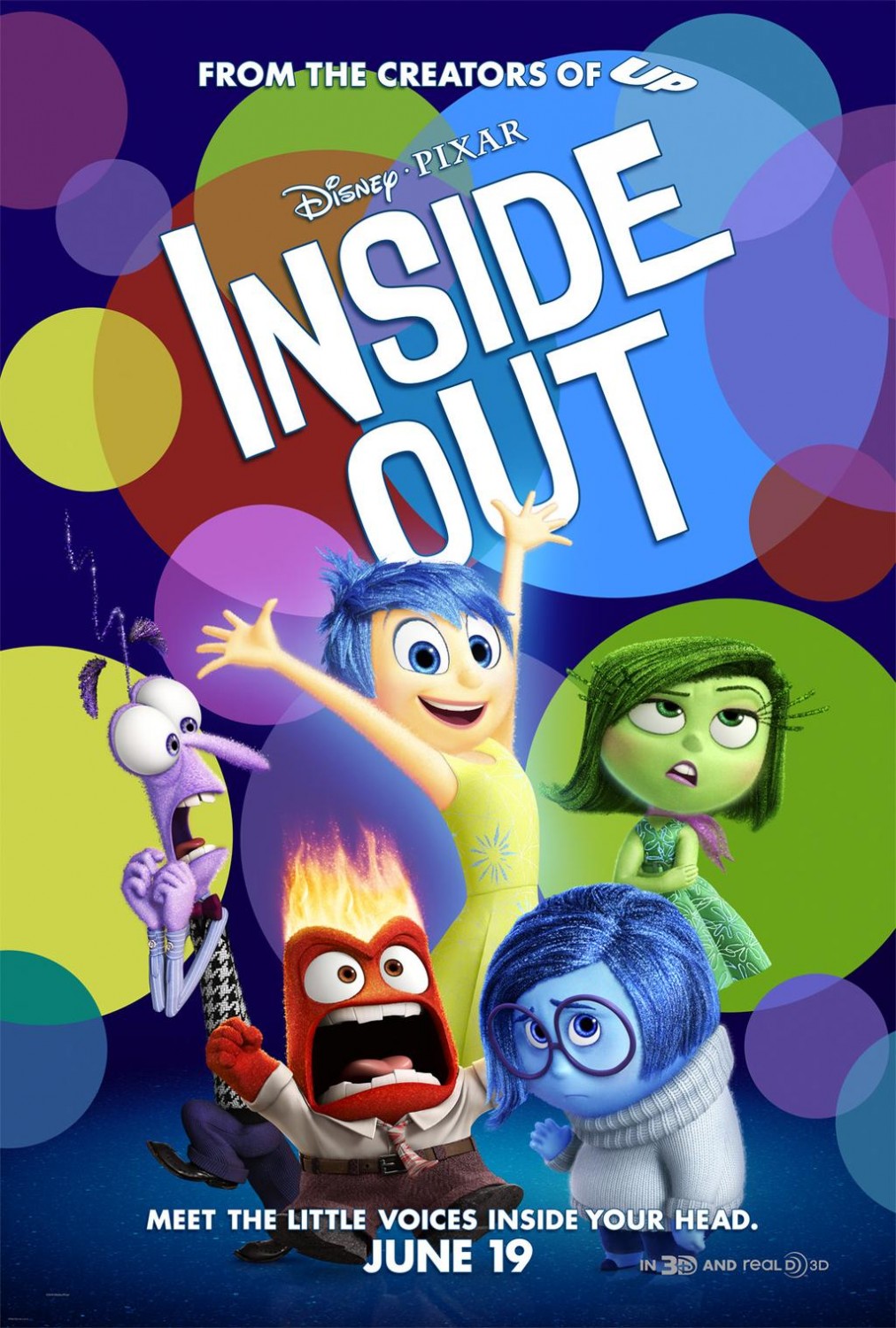Anyone who has followed my reviews over the years knows I hold Pixar in the highest regard. They’re the gold standard not only for animated movies but often for movies in general. Heck, I even gave Cars 2 a 4/5-star rating, and I still stand by it.
Lately, though, I’m starting to wonder what’s going on in Emeryville. The core brain trust is still there (I’ll take John Lassiter, Pete Docter, and Andrew Stanton over many other filmmakers any day of the week), so it’s not a personnel issue… but there’s something a little “off” lately. 2013’s Monsters University was perfectly fine and entertaining, but it fell short of the near-perfection level of films like Up, The Incredibles, and Toy Story 3. And now comes Inside Out. Again– I’ll say that the worst Pixar movie is still better than most of the stuff out there, but there’s a palpable sense I got while watching the film that, frankly, something’s missing. The uneven story is all over the place (half slog, half hectic), and the animation isn’t close to the fantastic eye candy of movies like Brave and Wall-E. It almost feels like Pixar isn’t trying anymore.
Much was made of the initial Pixar meeting back in the 90s when Lassiter et al sat around a table and decided their first handful of movies would be about toys, bugs, monsters, superheroes, and cars– not exactly outside-the-box thinking, but the devil was in the details; Pixar’s ability to take those topics and spin them into masterful films set the studio apart. Inside Out is their 15th film (I know, right?), and it’s their most ambitious project yet– getting inside the mind of a pre-teen girl. Kudos to director Pete Docter and his team for even attempting it, but… even if you’re Pixar, simply having good intentions isn’t always enough.
The film begins with the birth of Riley Anderson. Inside her head is the Tinkerbell-esque Joy (Amy Poehler), who controls Riley’s happiness. Soon after, four more emotions join the fray– Fear (Bill Hader), Disgust (Mindy Kaling), Anger (Lewis Black), and Sadness (Phyllis Smith). Each steps up to the plate as events warrant– with Sadness, Anger, and Fear figuring prominently when, at age 11, Riley’s dad announces that the family is moving from Minnesota to San Francisco. Those five emotions aren’t all that’s inside Riley’s head, though, as we discover when Joy and Sadness get accidentally booted from the conscious mind’s Headquarters and end up in Long-Term Memory Land. Once there, they must hurry to catch a ride on the Train of Thought, with the help of Riley’s long-forgotten imaginary friend Bing Bong (Richard Kind), to get everything back in place.
There’s no denying that parts of Inside Out are sweet and charming, and others (most of the scenes involving Anger and Fear) are very, very funny, but in the third act, the train starts going off the rails (no pun intended). It’s clear that Docter (along with co-screenwriters Meg LeFauve and Josh Cooley) was going for a Toy Story 3-type, heartfelt resolution… but by the time we get there we’ve been on such an odd ride–equal parts frenetic and rambling–that a wrap-up scene that tries to suck some real emotions from the audience just seems like little more than a tacked-on afterthought. The movie storms out of the gate like Wreck-It Ralph for the first hour or so and then hits the brakes to become a heady (pun intended) message film. It’s enough to give your brain whiplash. At one point, Riley’s memories (in the form of islands) sadly start crumbling away, but then (voila!) they come back. Wait, what?
Sure, Inside Out’s moral is worthwhile– that every single emotion is important (including sadness)– but the execution here is another story. With a little more polish, Pixar’s latest could have really been something to wrap your head around, but instead I ended up feeling a sixth emotion… disappointment.
3.5/5 stars
